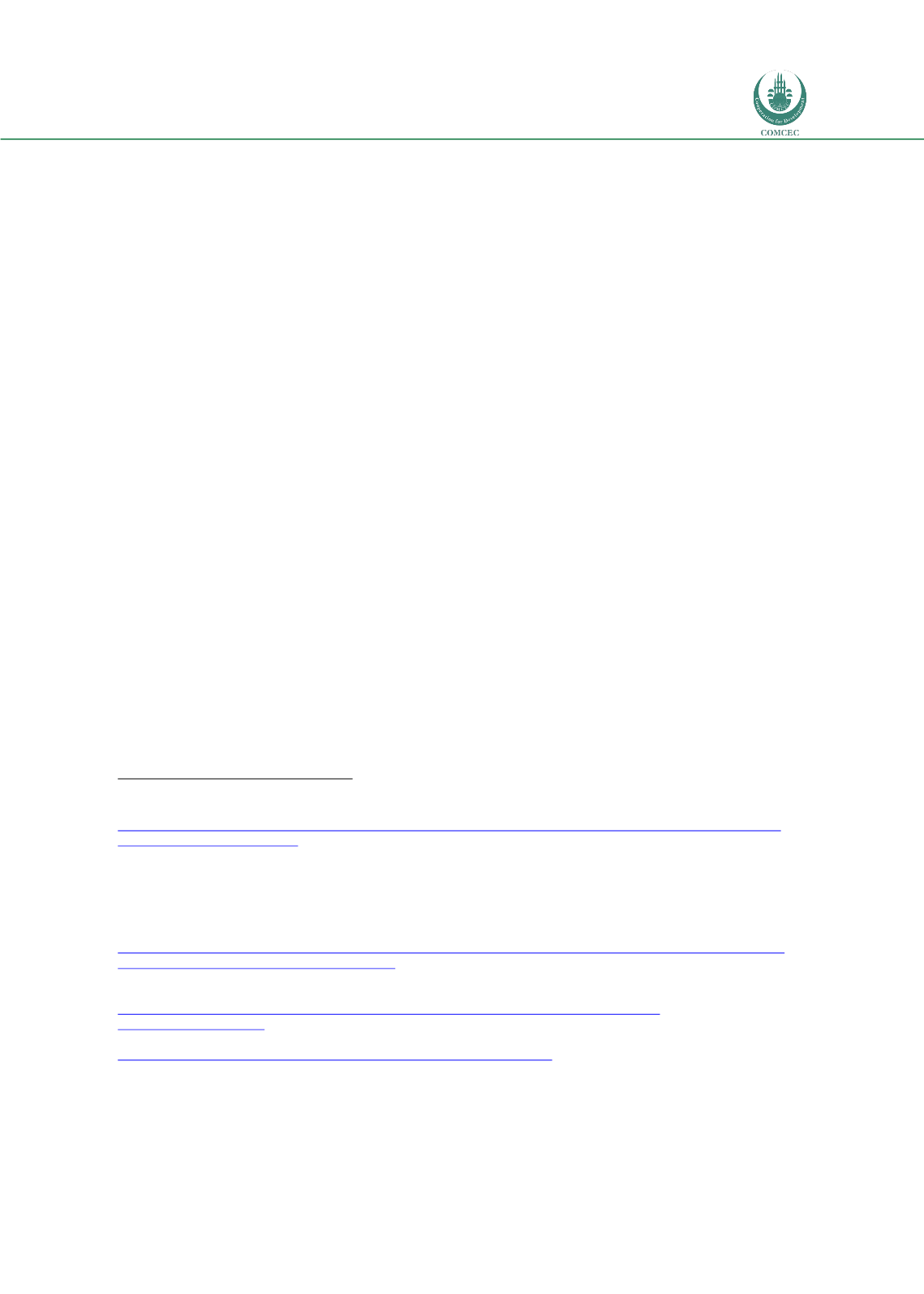

Forced Migration in the OIC Member Countries:
Policy Framework Adopted by Host Countries
59
Bangladeshis.
247
Women and girls made up about 15 percent of these flows, a number which
has gradually increased in recent years.
248
Southeast Asia also hosts refugees and asylum seekers from other regions, including Afghans,
Iranians, Iraqis and Pakistanis, who often use the region as a gateway to reach Australia or
Europe (via airplane).
249
While these migrants may have the initial goal of reaching a third
destination, many end up stuck in countries such as Malaysia, Thailand or Indonesia due to a
lack of resources to progress onward.
250
In 2013 the Iranian refugee and asylum seeker
population in Malaysia was estimated to be between 70,000-100,000, with the most recent
surge arriving during the 2009-2010 protests.
251
2.7.2.
Protection frameworks in Southeast Asia
No OIC country in the region (Malaysia, Indonesia, Bangladesh, or Brunei Darussalam) has
ratified the 1951 Convention, and none have enacted national asylum legislation.
252
As a
result, these countries often only provide minimal rescue, relief, and temporary shelter to
those stranded at sea.
253
The principle of “asylum for resettlement” established during the
Indochinese Boat People Crisis (see Box 2) continues to guide regional policy.
254
In response
to the large maritime flows of Rohingya and Bangladeshis in 2015, Malaysia, Indonesia, and
Thailand agreed in a joint statement to offer temporary shelter to asylum seekers, on the
condition that the international community would repatriate or resettle the population within
one year.
255
In addition to this reliance on resettlement by third countries, the region has
tended to view refugee flows through the lens of security and border control, leading states to
focus on tackling transnational crime and irregular flows instead of expanding access to
humanitarian protection.
256
Arguably the most prominent initiative addressing irregular migration is the Bali Process,
which was created in 2002 to tackle people smuggling, human trafficking, and related
transnational crime. The process created a forum to bring together over 50 countries in Asia
(including 13 OIC member states), along with UNHCR, IOM, and the United Nations Office of
Drugs and Crime (UNODC). Though the scope of the process was widened in 2009 to include
protection issues, almost all of the Process’s initiatives continue to focus on security issues
247
UNHCR,
Mixed Maritime Movements in South-East Asia in 2015
, (Bangkok: UNHCR Regional Office for South-East Asia,
2016),
http://reporting.unhcr.org/sites/default/files/UNHCR%20-%20Mixed%20Maritime%20Movements%20in%20South- East%20Asia%20-%202015.pdf .248
Almost all of the women and girls travelling across the Bay of Bengal are reported to be Rohingya. UNHCR,
Mixed
Maritime Movements in South-East Asia in 2015
,
249
Malaysia and Thailand, for example, are popular transit points for Iranian asylum seekers because the countries have
adopted a loose visa policy towards Iranian nationals, and the cost of airfare is relatively inexpensive. From these points,
migrants can attempt to fly to Europe or elsewhere. Adam Taylor, “How two Iranian guys apparently heading to Europe
ended
up
on
a
Malaysian
flight
to
China,”
The
Washington
Post
,
March
11,
2014,
https://www.washingtonpost.com/news/worldviews/wp/2014/03/11/how-two-iranian-guys-apparently-heading-to- europe-ended-up-on-a-malaysian-flight-to-china/ ;UNODC,
Migrant Smuggling in Asia
, 68
250
Catherine A. Traywick, “For Illegal Migrants, Southeast Asia is the Means, not the End,”
Foreign Policy
, updated March 13,
2014,
http://foreignpolicy.com/2014/03/13/for-illegal-migrants-southeast-asia-is-the-means-not-the- end/?wp_login_redirect=0 .251
Navid Fozi, “The Iranian Diaspora in Malaysia: Emergent Pluralism,”
Middle East Institute
, updated July 10, 2013,
http://www.mei.edu/content/iranian-diaspora-malaysia-emergent-pluralism .252
Within the region overall, only Cambodia and the Philippines are signatories to the 1951 Convention.
253
McAuliffe,
Resolving the Policy Conundrums
, 20.
254
McConnachie, “Forced Migration in South-East Asia and East Asia,” 632
255
Susan Kneebone, “Comparative regional protection frameworks for refugees: norms and norm entrepreneurs,”
The
International Journal of Human Rights
20, no. 2 (2016): 161.
256
Kneebone, “Comparative regional protection frameworks for refugees,” 159
















